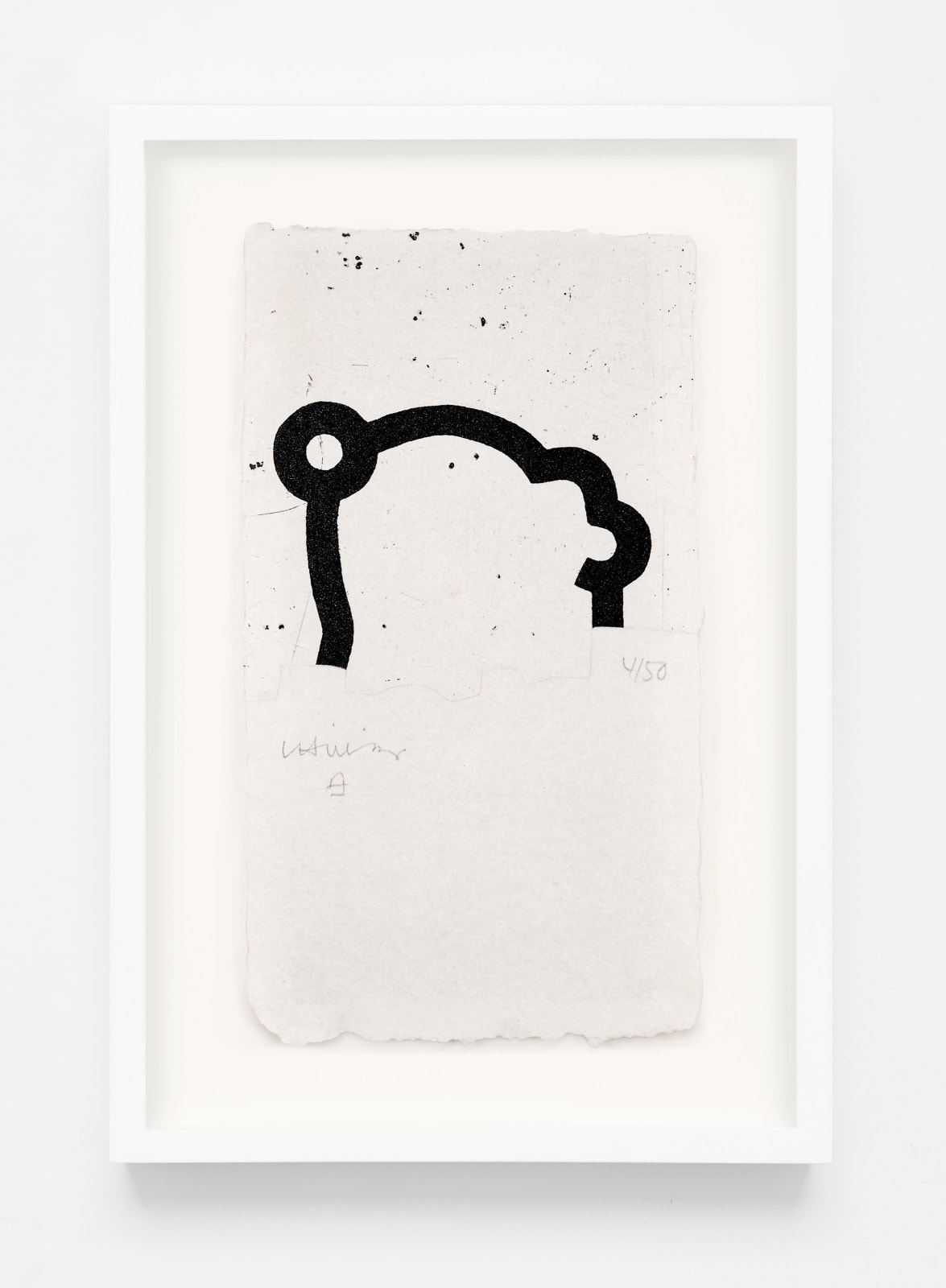-
Eduardo Chillida
Begirari, 1989Etching aquatint with relief on Segundo Santos paper8 1/8 x 4 3/8 in (20.5 x 11 cm)Edition of 50, plus 13 AP© 2025 Artists Rights Society (ARS), New York / VEGAP, Madrid. Courtesy of Zeit Contemporary Art, New York.$ 15,000.00Eduardo Chillida's ‘Begirari,’ an etching and aquatint with relief on Segundo Santos paper, delves into the interplay between vision and perception. The title ‘Begirari,’ meaning ‘to look at’ in Basque,...Eduardo Chillida's ‘Begirari,’ an etching and aquatint with relief on Segundo Santos paper, delves into the interplay between vision and perception. The title ‘Begirari,’ meaning ‘to look at’ in Basque, directs attention to the act of seeing, a recurring theme in Chillida's work. The artwork features a bold, abstract black form on a textured white background, suggesting an eye or a viewing aperture. This composition, marked by its simplicity and elegance, invites viewers to consider not just what is seen, but the act of seeing itself. The texture of the handmade paper adds depth and complexity, enhancing the visual and tactile experience.Chillida's interest in the seen and the unseen is a central motif in his artistic practice, manifesting in both his sculptures and works on paper. In his three-dimensional creations, Chillida often incorporates elements like the oculus, a symbolic representation of the eye, emphasizing the importance of vision and perspective. These sculptural forms engage with their surroundings, creating dialogues between solid and void, presence and absence. Similarly, ‘Begirari’ explores these themes on a two-dimensional plane, using the contrast between the black form and the white background to highlight the tension between visibility and invisibility, materiality and immateriality.
The technical aspects of ‘Begirari’ are integral to its impact. The use of etching and aquatint allows Chillida to achieve a range of tonal variations and textures, while the relief printing introduces a sense of depth. The highly textured Segundo Santos paper enhances these qualities, its irregular surface catching light in different ways and adding a tactile dimension to the piece. The raised areas create subtle shadows, contributing to the artwork's dynamic interplay of light and shadow. This technical mastery, combined with Chillida's profound exploration of vision and perception, makes ‘Begirari’ a compelling and thought-provoking work. It encapsulates Chillida's ability to convey complex ideas through minimalist forms, inviting viewers to reflect on the nature of seeing and the spaces between the seen and the unseen. Through ‘Begirari,’ Chillida not only captures the essence of vision but also evokes the poetic and philosophical connotations of looking and perceiving.
NOTES
This artwork is signed and numbered in pencil.
Published by El País, Madrid. Printed at Taller Hatz, San Sebastián.Provenance
Private collection, Europe
Private collection, New York
Literature
Martin Van Der Koelen. Eduardo Chillida: Opus P.III: Catalogue Raisonné of the Original Prints, 1986-1996. Munich, 1996, cat. no. 89006 (illustrated in color).




